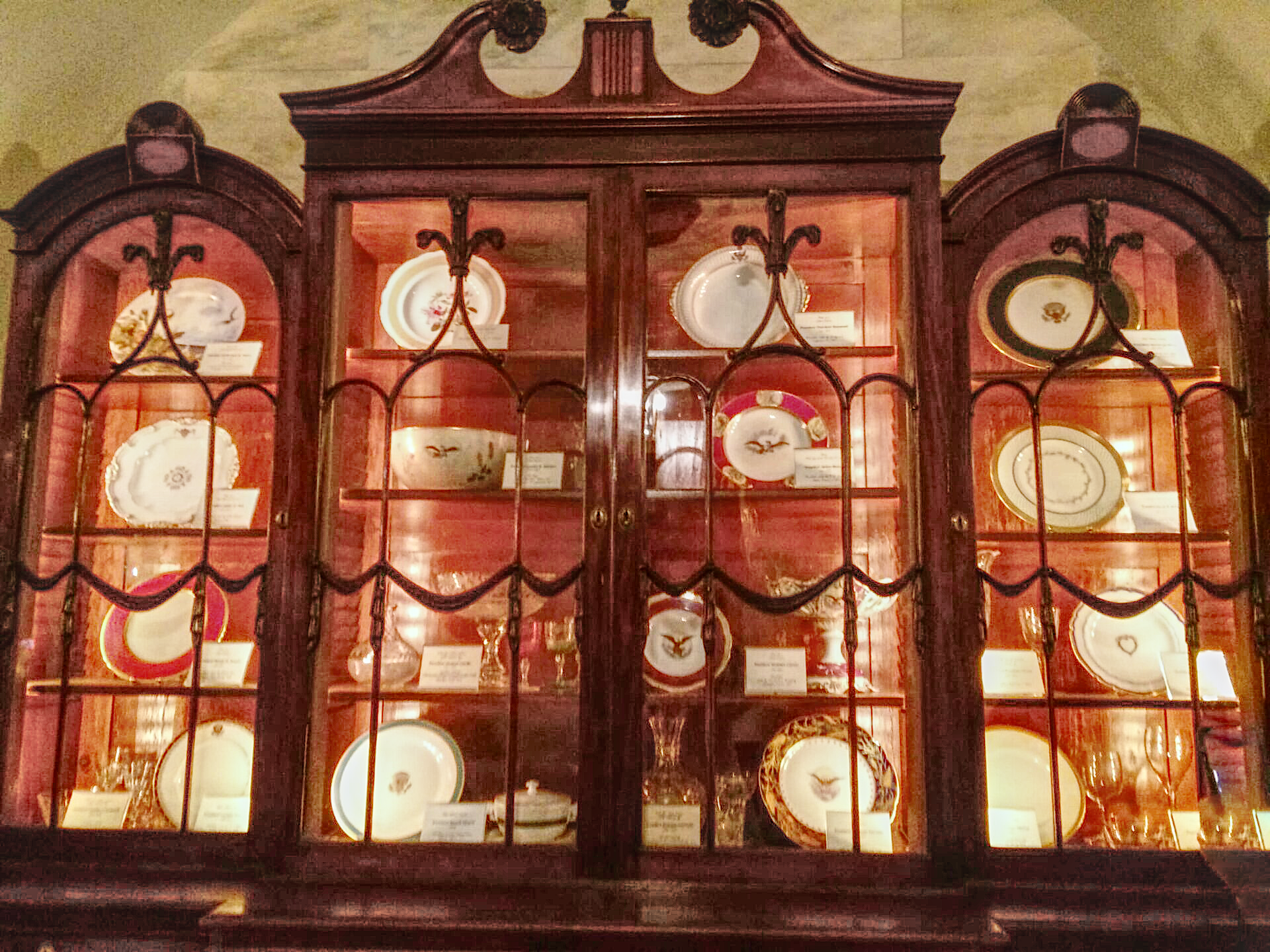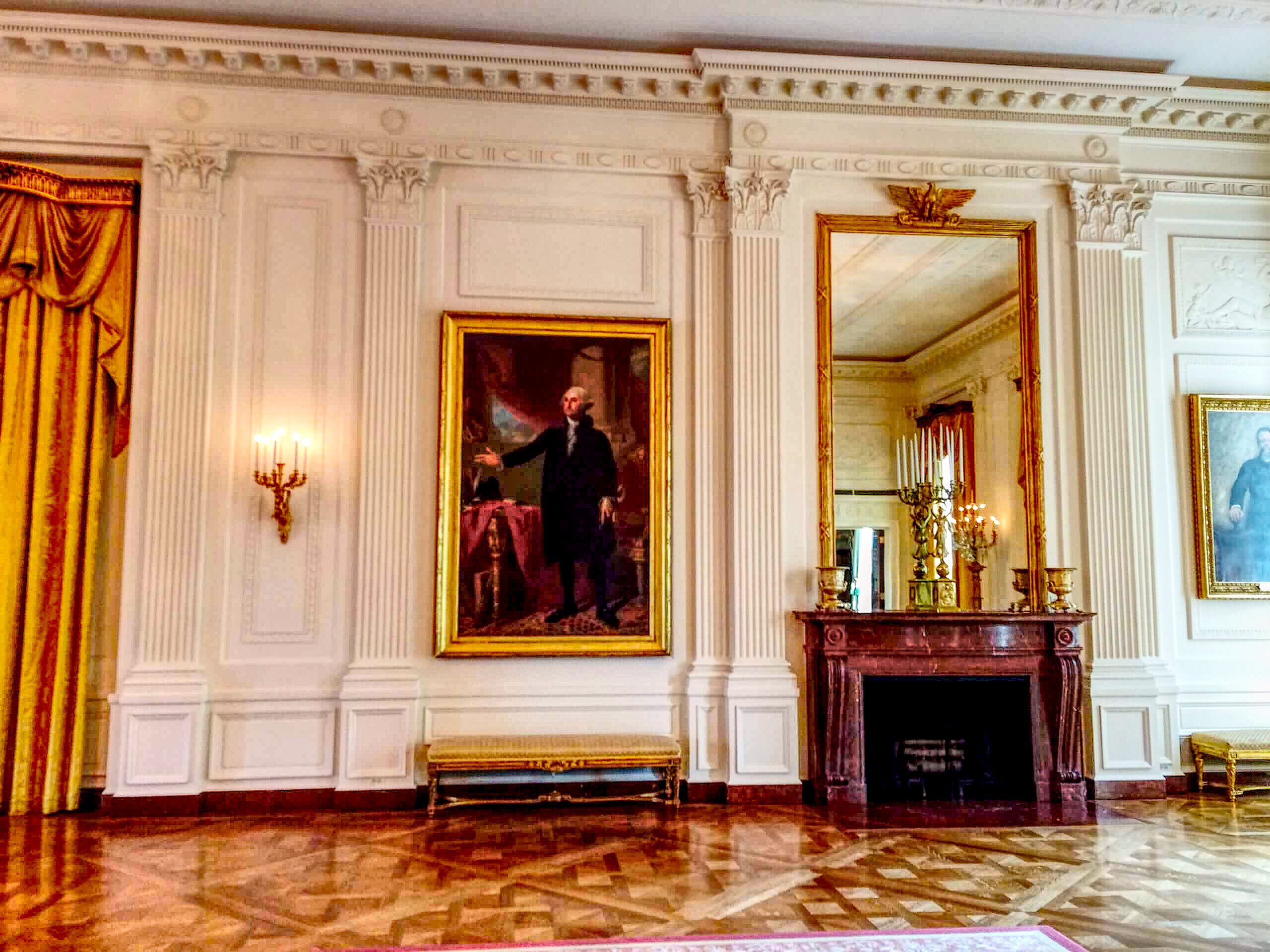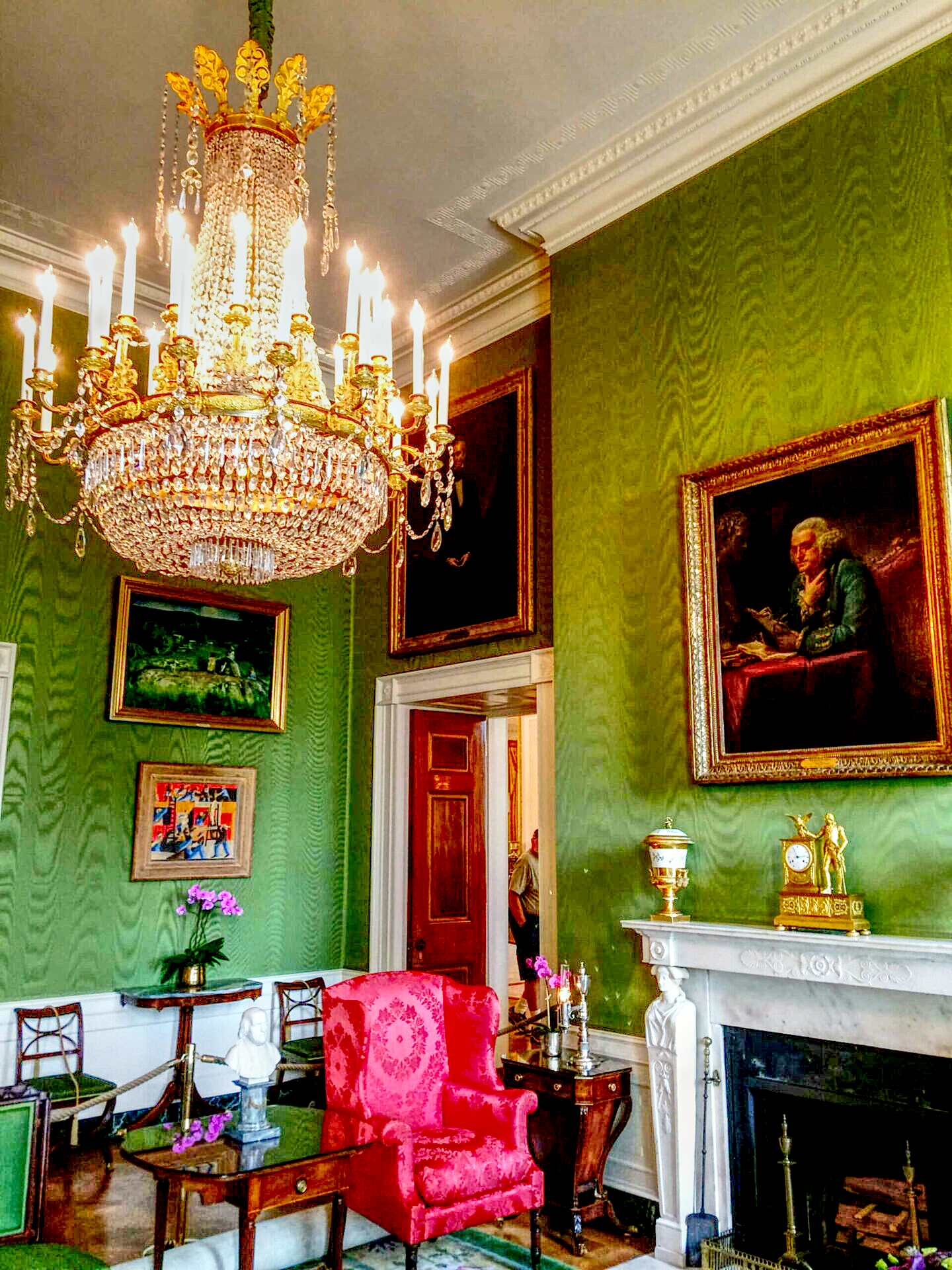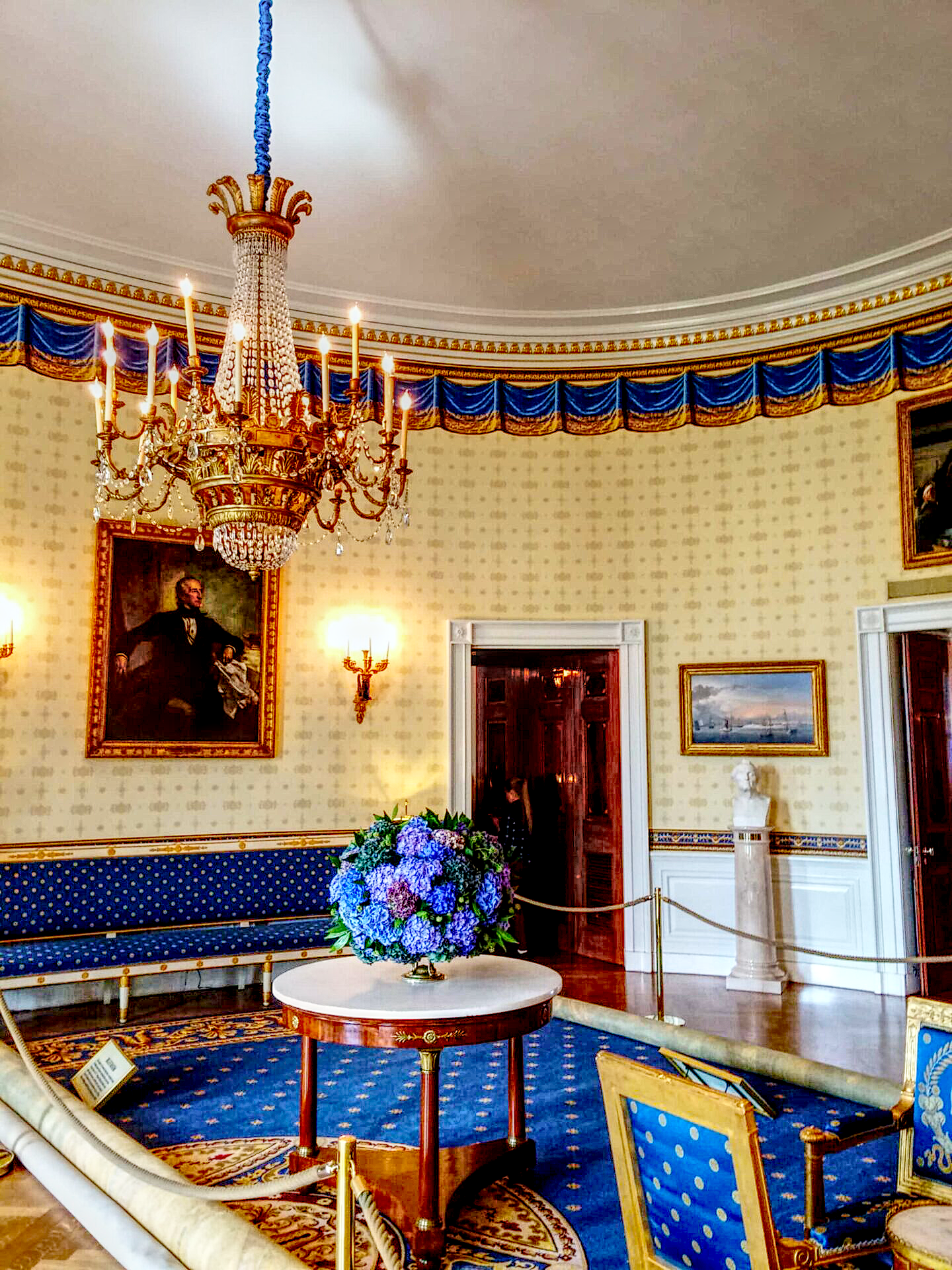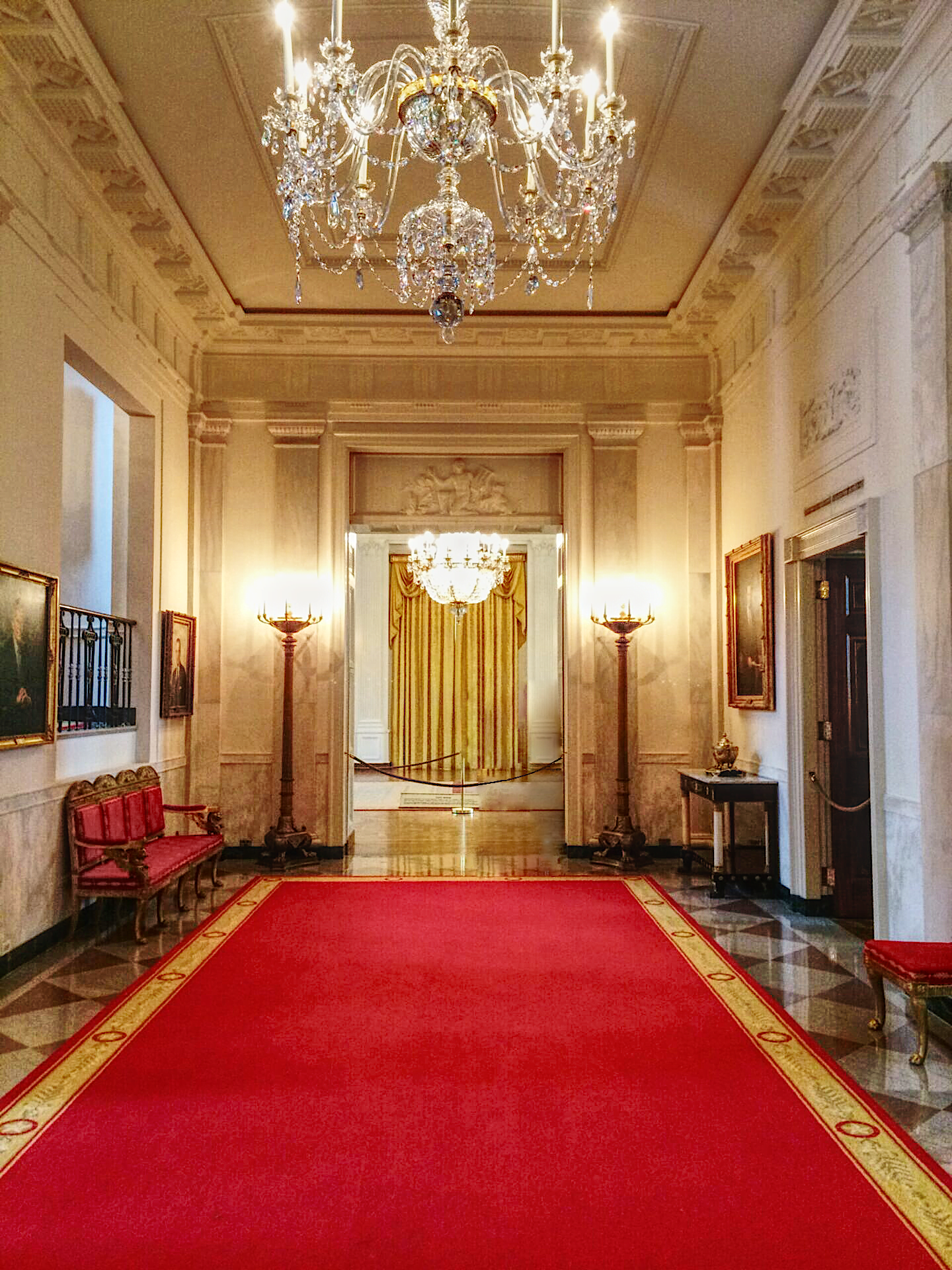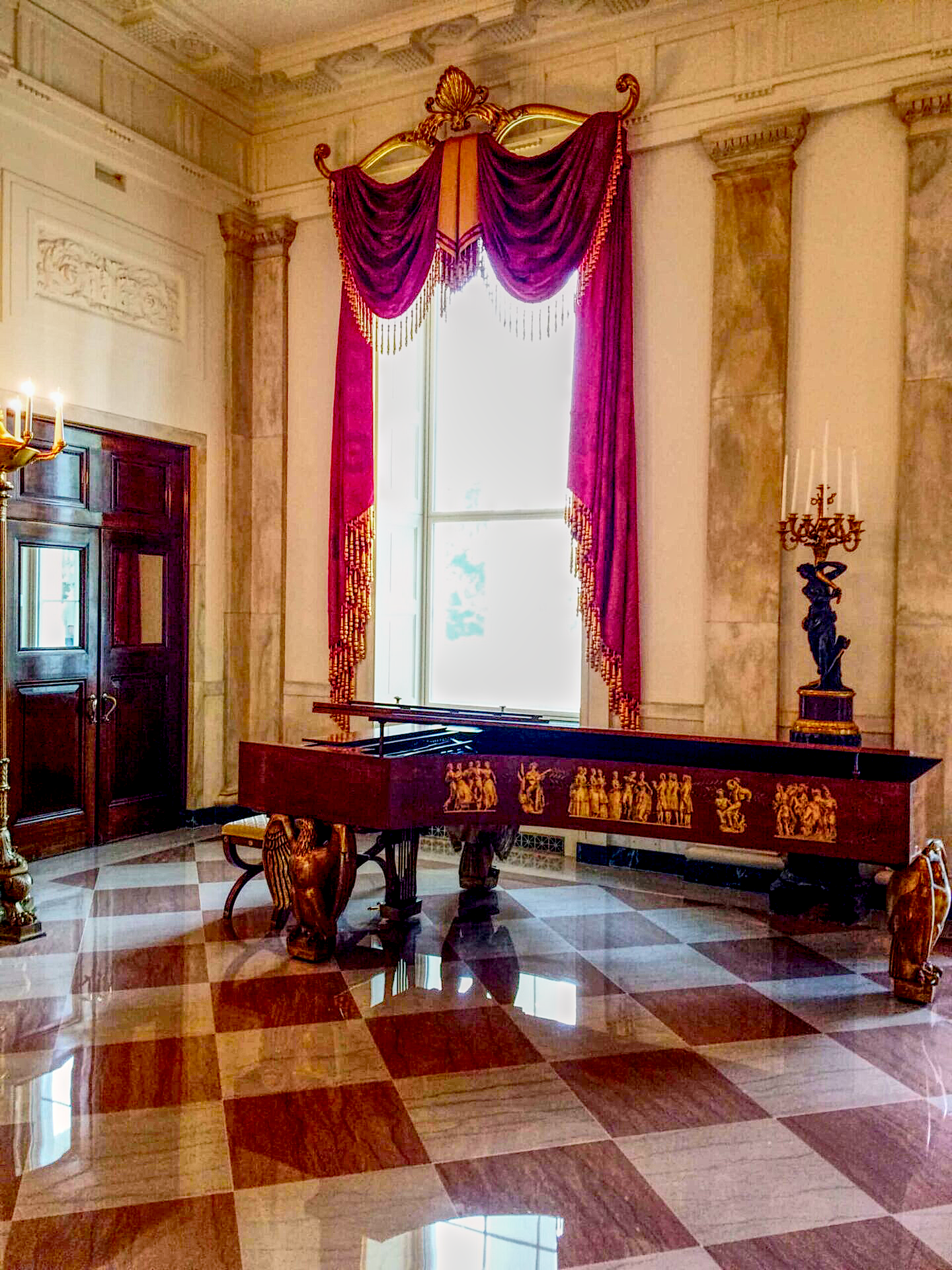The White House is a must-visit tourist spot when in Washington, D.C., as it serves as the official residence and workplace of the sitting President. However, due to high security measures, visitors are often limited to viewing the exterior from a distance, with limited opportunities to enter the building.
To tour the White House interior, one typically needs an introduction from a member of the United States Congress, and individuals residing outside the United States are required to apply through their respective embassies in Washington, D.C. Unfortunately, the Japanese Embassy, for example, does not currently accept applications for White House interior tours, making it challenging for Japanese citizens to visit.
In this case, one alternative way to experience the White House interior more intimately is through Google Maps’ Street View feature.
Immersing yourself in the local atmosphere through Street View
Google Maps’ Street View allows you to virtually walk through various locations around the world, providing a sense of actually being there. This includes not only the streets of Washington, D.C. but also the interior of the White House.
Since Street View follows the same route as actual tourists would take, you can have a more immersive experience. Additionally, Street View provides descriptions of the artwork and sculptures displayed in each room of the White House, allowing you to appreciate details that might have been overlooked during an in-person visit.
Now, let’s proceed to explore the White House interior using Street View.
Starting the tour at the East Wing

One of the appealing aspects of Street View is the ability to access any location of your choice. However, to enhance the sense of presence, let’s follow the same route as an actual tour and introduce the various rooms of the White House along the way.
As a former visitor in 2017, I will also include photos from my personal tour for reference.
Visitors are initially led to the East Wing, located on the eastern side of the White House.
This area serves as the first stop for individuals officially invited to the White House. Contrary to the exterior image, the lobby here features a substantial use of wood and exudes a sense of grandeur.
The entrance lobby showcases four portraits: Nancy Davis Reagan (wife of the 40th President), Elizabeth Truman (wife of the 33rd President), Woodrow Wilson (28th President), and Andrew Johnson (17th President), displayed from left to right as you enter.
Passing through the lobby, you’ll encounter large windows that provide a close view of the President’s residence and the famous semicircular balcony often seen on television.

From the windowed area, a straight corridor extends westward, leading to the Visitor’s Foyer, which used to be the first room visited by regular tourists.
Inside the Visitor’s Foyer, you’ll find a bust of Abraham Lincoln on the west wall and portraits of Grover Cleveland (22nd and 24th President), Calvin Coolidge (30th President), Millard Fillmore (12th President), and Chester Alan Arthur (21st President) displayed on the east and north walls, starting from the right.
Presidential Residence and Lesser-Known Basement Decorations

Once you pass through the west door from the Visitor’s Foyer, you enter the main house called The Executive Residence, where the President resides.
The Executive Residence is the centerpiece of the White House and is often seen on television. However, the interior, especially the floors above the second floor where the President resides, is rarely glimpsed through the media, shrouded in mystery.
In particular, the upper floors above the second floor are inaccessible even to the Secret Service, let alone regular tourists. However, the basement, particularly the eastern half, is included in the tour route and offers an opportunity to appreciate its charm.
The Center Hall is a prominent area with distinctive white marble walls and arched ceilings. On the right side as you enter from the door, you’ll find a part of the tableware used during official state dinners. On the opposite side, a portrait of First Lady Laura Welch Bush (wife of the 43rd President) is displayed.
To the north of the Center Hall, there is the Library, a waiting room for male guests, while the Vermeil Room serves as a waiting room for female guests on the south side.
The Library houses numerous books related to the White House and American history. True to its name, portraits of Native Americans adorn the eastern wall and above the south door.

The Vermeil Room features a splendid interior with abundant use of gold. On all four walls, portraits of six First Ladies are displayed in a clockwise direction: Lou Henry Hoover (wife of the 31st President), Claudia Taylor Johnson (wife of the 36th President), Jacqueline Bouvier Kennedy Onassis (wife of the 35th President), Patricia Ryan Nixon (wife of the 37th President), Mary Jeanette Doud Eisenhower (wife of the 34th President), and Anna Eleanor Roosevelt (wife of the 32nd President).

In Street View, clicking on locations with portraits or sculptures allows you to view accompanying descriptions. During an actual tour, however, visitors can only observe the Vermeil Room and the adjacent China Room to the west from the Center Hall, as they are all visible through the corridor. Therefore, Street View provides a better opportunity to explore the finer details.
Adjacent to the west of the Vermeil Room is the China Room, which houses various tableware used for official state dinners. On the south wall of this room, a portrait of Grace Goodhue Coolidge (wife of the 30th President) is displayed.
Additionally, near the north door of the China Room, there is a watercolor painting depicting Grace Goodhue Coolidge.
State Floor: The Face of the White House Worthy of its Name

When you ascend the staircase that extends north from the Center Hall, you arrive at the main floor of the White House, which is deserving of being called the face of the White House. This floor is referred to as the State Floor since numerous national events take place here, making it the area most frequently seen in the media.
Upon turning right immediately after climbing the stairs, you enter a room with high ceilings and expansive space stretching from north to south.
The East Room: The Largest and Most Formal Room in the White House
This room is the grand East Room, the largest room in the White House, and it hosts events such as press conferences with foreign dignitaries.
The room appears to be just a spacious area with minimal decorations at first glance. However, it is adorned with portraits of significant figures from American history.
On the east wall of the East Room, there are golden curtains that cover the windows in the center. To the right are portraits of the first President, George Washington, and to the left is a portrait of his wife, Martha Dandridge Custis Washington. Sandwiched between them are portraits of the 26th President, Theodore Roosevelt, to the south, and the 25th President, William McKinley, to the north.

One of the highlights of the State Floor, which includes the East Room and various rooms used for national events, is the carpets that cover the floors.
During actual visitation times, the edges of these carpets are rolled up to prevent tourists from stepping on them. However, in Street View, the carpets are spread out, offering the advantage of exploring them online.
Adjacent to the west of the East Room is the Cross Hall, which runs through the center of the State Floor from east to west. On the south side, there are the Green Room, Blue Room, Red Room, and the State Dining Room used for official state dinners, followed by the Family Dining Room to the north.
Visitors who tour the East Room proceed to the Green Room, Blue Room, State Dining Room, and then the Cross Hall in that order, so let’s continue the explanation in that sequence.
The Green Room: Evoking the Victorian Era
The Green Room is covered with green-colored fabric from floor to ceiling, and everything from the curtains to the carpets is unified in green.
Moreover, the fabric covering the entire walls appears to ripple when viewed from a distance, and it is renowned for its beauty.
In this room, there are portraits of five Presidents and one First Lady, along with seven landscape paintings. Above the east fireplace, there is a portrait of Benjamin Franklin, who made significant contributions to the founding of the United States.
On the east wall, starting from the right, there are portraits of the 23rd President, Benjamin Harrison, the 11th President, James K. Polk, and to the north, the 6th President, John Quincy Adams. On the west wall, there are portraits of the 9th President, William Henry Harrison, and the 7th President, Andrew Jackson.
The Blue Room: The Central Jewel of the State Floor
Adjacent to the Green Room on the west side is the Blue Room, considered the most beautiful room in the White House.
This room is located in the central part of the residence, precisely where a semicircular balcony is situated, and the room’s shape itself is elliptical to match it.
Unlike the Green Room and the Red Room to the west, the Blue Room is not entirely blue at present. While there was a time when the walls were entirely blue, they were renovated in 1995 to their current appearance.
The interior, adorned with blue and gold, is both splendid and elegantly finished, skillfully incorporating curves.
In this room, starting from the east fireplace and proceeding clockwise, there are portraits of the 5th President, James Monroe, the 27th President, William Howard Taft, the 10th President, John Tyler, the 2nd President, John Adams, and the 4th President, James Madison.
The Red Room: Reflecting a Colonial Style
As you move from the Blue Room to the west side, the atmosphere changes dramatically to a world of red.
The Red Room is furnished with linearly designed furniture, and many of them showcase the natural colors of wood, creating a distinct ambiance different from the glamorous impressions of the Blue Room or the Green Room.
In this room, there are portraits of the 13th President, Franklin Pierce, the 19th President, Rutherford B. Hayes, the 4th First Lady, Dolley Payne Madison, and the 18th President, Ulysses S. Grant, as well as 12 paintings depicting landscapes such as Niagara Falls.
The State Dining Room: Hosting Official State Dinners
Continuing west from the Red Room through the door, you arrive in a spacious room dominated by white.
This is the State Dining Room, located opposite the East Room in the central area of the residence.
However, unlike the East Room, the north wall is positioned at the same location as the Cross Hall, making the State Dining Room slightly narrower than the East Room.
On the north wall, there are two doors extending east and west. Passing through the door on the right from the south leads to the Family Dining Room, used for smaller dinners, while beyond the door on the left is a staircase and an elevator leading to the kitchen in the basement.
On the west wall of the State Dining Room, there is a fireplace, above which hangs a portrait of the 16th President, Abraham Lincoln.
The fireplace features an excerpt from a letter written by Abigail Adams, wife of John Adams, the first occupant of the White House. The inscription reads, “I pray Heaven to bestow the best of blessings on this House and all that shall hereafter inhabit it.”
Cross Hall: A Intersection of Countless Histories
As you proceed east from the State Dining Room, you reach a corridor that runs through the State Floor from east to west.
This corridor, known as the Cross Hall, features a symbolic red carpet that is rolled up on the eastern side during visitor hours, prohibiting walking on it.
However, in Street View, you can walk on the red carpet and enjoy the atmosphere of the corridor, allowing you to feel like a President.
Upon entering the Cross Hall, on the immediate left side, there is a portrait of the 40th President, Ronald Wilson Reagan, and directly opposite is a portrait of the 35th President, John Fitzgerald Kennedy.
Note that there are several portraits displayed on the east side of the corridor, but they cannot be accessed in Street View.
The Cross Hall has one door each leading to the Green Room, Blue Room, and Red Room, respectively. Although they are open during actual tours, visitors cannot pass through them.
Above the door that leads to the Blue Room, which is centrally located, the Presidential Seal is displayed. To the left of it is a 4-foot by 6-foot American flag, and to the right is an equally sized Presidential flag.
The Grand Entrance Hall Worthy of Being Called the Main Hall of the White House
To the north of the Cross Hall, a vast entrance hall extends, with its floor covered in different-colored marble that reflects like a mirror.
In this hall, a Steinway & Sons grand piano, specially made for the White House, is placed. On the east side, there is an impressive grand staircase reminiscent of a ballroom, adorned with a red carpet.

On the right side of the grand staircase hangs a portrait of the 42nd President, William Jefferson Clinton, and on the opposite wall is a portrait of the 43rd President, George Walker Bush.
These decorations are fittingly the culmination of the tour. However, once you reach the entrance hall, there is something you must see.
Embedded in the floor between the Cross Hall and the entrance hall, there is a cornerstone plaque with four years inscribed on it.
From top to bottom, the years are 1817, 1792, 1902, and 1952. The year 1817 represents the reconstruction of the White House, which was burned during the War of 1812 from 1812 to 1814. The year 1792 marks the beginning of the construction of the White House. 1902 signifies the major renovation by President Theodore Roosevelt, and 1952 represents the major renovation by President Harry S. Truman.
Exploring the White House with the Unique Commentary and Vivid Images of an Online Experience
The White House, towering over 1600 Pennsylvania Avenue in the prime location of Washington, D.C., requires extremely stringent procedures for the general public to enter.
Furthermore, if you visit in person, the tour is highly popular and can be crowded depending on the time and location.
While there are advantages to experiencing the residence of the world’s leading presidents up close, truly appreciating the intricate decorations and furnishings would be difficult with Street View alone.
For those who have plans to visit the White House or simply want to explore it, I highly recommend making use of Street View.

